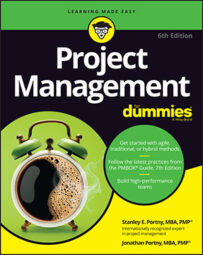- You may miss activities because your focus is on meeting a time constraint, not on ensuring that you’ve identified all required work.
- You base your duration estimates on what you can allow activities to take rather than what they’ll require.
- The order for your proposed activities may not be the most effective one.
A project plan is a road map that, if followed, will lead to project success. To have the greatest chance of achieving that success, the following must happen:
- The plan must be complete and accurate (that is, performing all parts of the project in accordance with the plan will actually result in project success).
- The plan must be feasible (in other words, there can be no instances where performing one or more parts of the project in accordance with the plan is determined to be impossible).
- People must believe the plan is complete, accurate, and feasible (it’s not enough that the plan is complete, accurate, and feasible; people must know it and believe it, too).
- People must commit to following the plan (in other words, people must decide to make every effort to perform their project work in accordance with the plan).
- People must make every effort to follow the plan (people must follow through on their commitment).

